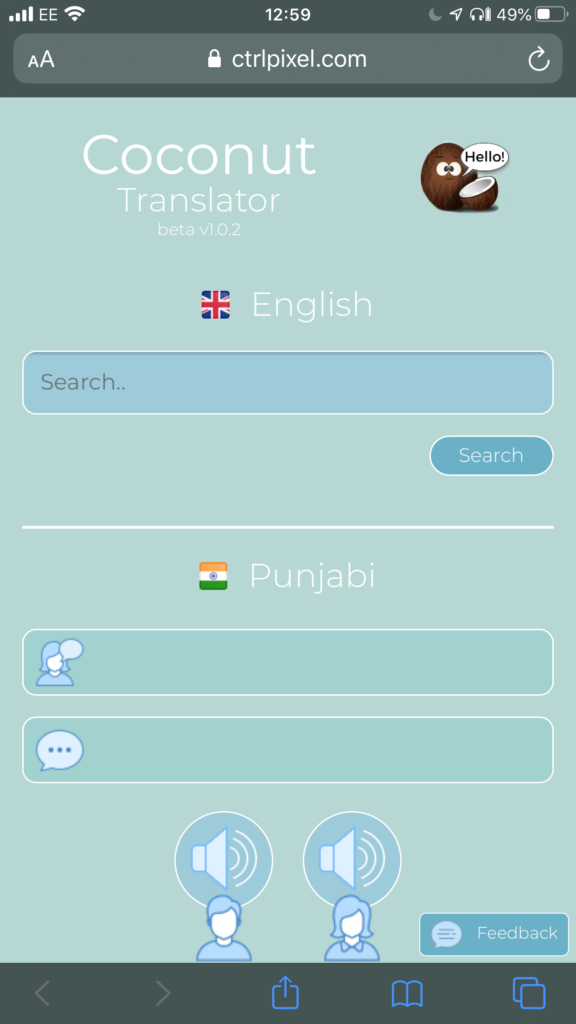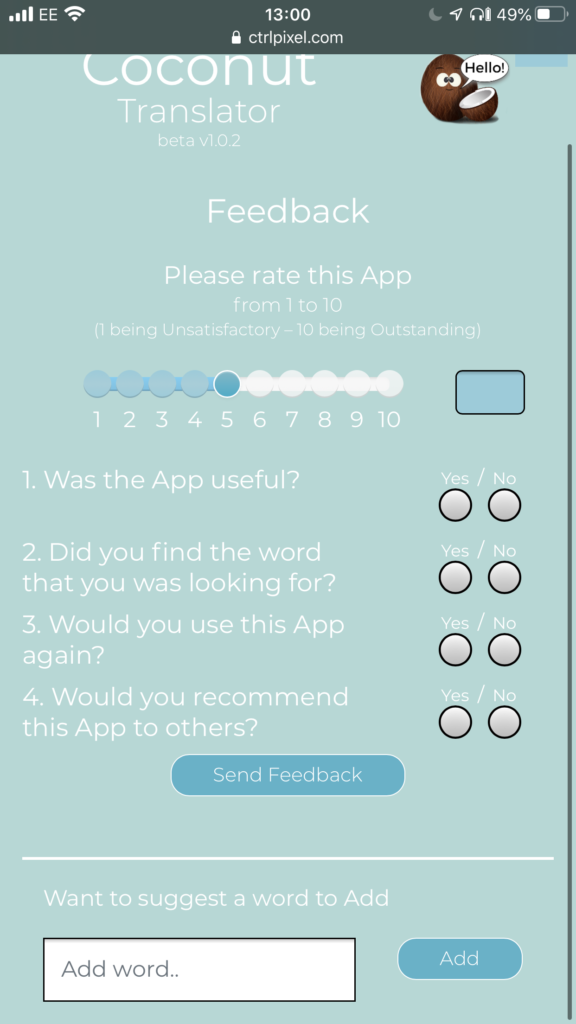coconut translator
UX research for translator app
Making a product for learning a new language
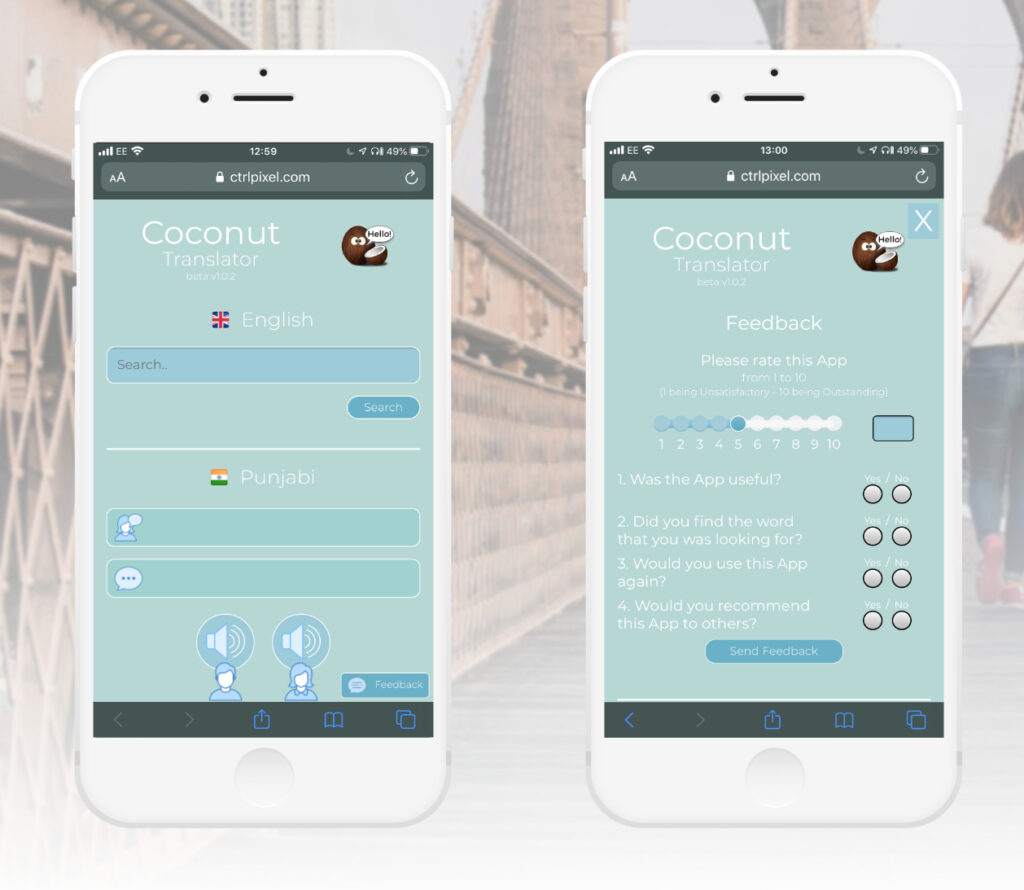
Discovery
When starting my UX Research with CtrlPixel, they had a vague idea in mind. An app for translating English to Punjabi. They faced this everyday problem of not having good enough sources to be able to translate or learn words in Punjabi.
So my job was to:
- Explore the competitors and the problems they faced, and where they did not satisfy their customers.
- Discover the users for this app
- Interview potential users
- Seek content for the app from real users
So I started my research.
Competitive Analysis
There were a few apps on the market, English to Punjabi, Punjabi to English, Vocabulary apps, etc. But they all lacked vital things that we assumed were necessary.
Our Assumptions:
- Users want to be able to read the translation phonetically, and not in punjabi script- of course English speakers will not be able to read script.
- Users want to hear the pronunciation clearly.
- Users want accurate translations that can be used in conversations.
When exploring the market, I found the top three apps that were downloaded. iTranslate, Quick Translator and English to Punjabi Translator (AllDictonary). They all had their pros and cons.
- iTranslate– is a very well known and highly downloaded app. It has great features like; it can use a camera to translate words, uses AR to show translations for objects, history list and phrasebook (with search feature). But the main problem, NONE of these features work for Punjabi. It translates words into script and does not have a speak feature so you cannot hear the pronunciation. So it’s a great app just not for Punjabi.
- Quick Translator– is a well-developed and has great features like; can capture photos of text and translate, history list, favourites list and a speaking feature but again it translates to punjabi script.
- English to Punjabi Translator– again, it’s a well developed app with many features like; the simples phrases list (conversation pieces), speaking feature and it works offline. But the main problem is the accuracy, it was not made by native speakers of English so at times was inaccurate. And again wrote the translation in Punjabi script.
From my competitive analysis research, we were sure that our idea would be a great competitor in the market, as we were going to satisfy the needs that were not being made by other products.
Discovery of Potential Users
From researching the competitors, I also read the reviews of these products, to see what kind of users are downloading these products. The main group of users were: Punjabi speakers wanting to learn English, people learning Punjabi for travel or work or English speakers wanting to learn Punjabi.
I wanted to dive more into learning about the English speakers wanting to learn Punjabi. Why did they want to learn it? Who would they speak to? How do they learn languages?
So (due to covid-19) I found some users via the internet and through contacts to speak to English speaking users wanting to learn Punjabi.
User Interviews
I conducted most of the interviews through FaceTime or online. I wanted to know the intentions of the potential users, their backgrounds, and how they would use the product. I asked questions like:
- Why do you want to learn Punjabi?
- How much Punjabi do you speak or understand?
- Have you ever tried to learn Punjabi in the past? How?
- What would be useful to learn in Punjabi?
- Have you ever used an app or website to learn Punjabi?
I gained a lot of insight from users, we also confirmed the assumptions we had. I gathered that many people from British Asian (Punjabi) backgrounds are wanting to learn punjabi, mostly to feel more connected to their culture and their families.
Their biggest struggle in learning, was that the current translation products out there were not great and usually inaccurate, or used Hindi instead.
Users want to learn relevant and conversational words and phrases, so they can start using the language in everyday life.
Other users from a non-Asian background struggled mainly with pronunciation, as most apps on the market today only write the translation in Punjabi script and do not have a speaking feature to hear the pronunciation.
Users that have used other apps to learn European languages have enjoyed the aspect of ‘games’ as it made it easier to start learning vocabulary.
From this research, I made personas, so the rest of the team could focus on making the product suitable for those personas.
User Personas

Jade, aged 21, lives in Birmingham
Works in marketing.
Knows a few words in punjabi, but cannot speak or understand any; has tried to use apps in the past to learn but they are insufficient.
Wants to start learning punjabi to understand family and to feel more connected.
Lives a busy lifestyle so needs to learn on the go, and start with simples words and phrases.
Jasminder, aged 32, lives in London
PA to Managing Director
Understands Punjabi but rarely speaks it.
Has grown up using the language at home especially with grandparents.
Would like to learn more because she feels like she doesn’t practice as much anymore.
Hasn’t found a site or app that great for learning punjabi.
Wants to go to India to meet her extended family and speak with them in their language.


Tom, aged 38, lives in Manchester
Builder
Married to Preet for 4 years
Doesn’t understand or speak any Punjabi
Has used other language apps in the past for European languages, has a big interest in learning Punjabi to speak to Preet’s older family members
Not very technical, likes basic UI’s and usable apps
User Journey Maps
Using my personas, I made user journey maps showing typical journeys for other products on the market already.
The graph with numbers indicate the persona’s mood during the experience.
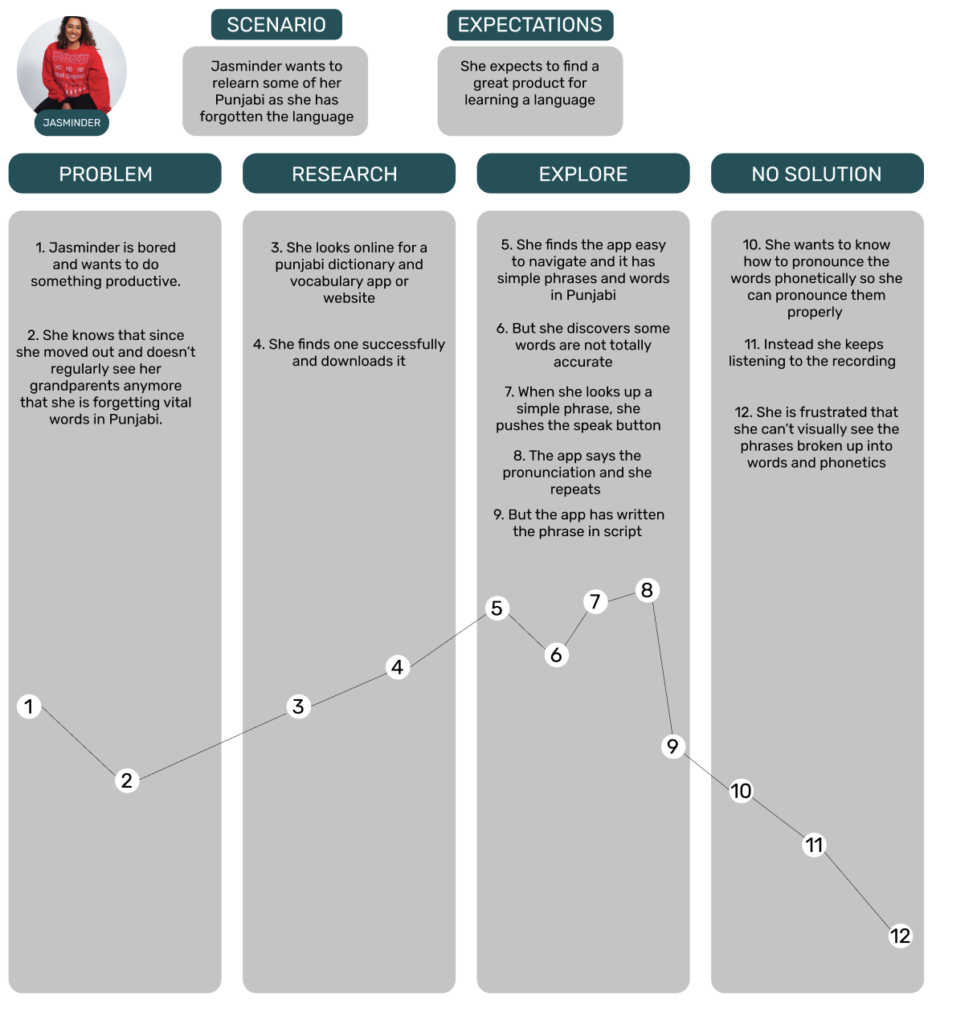
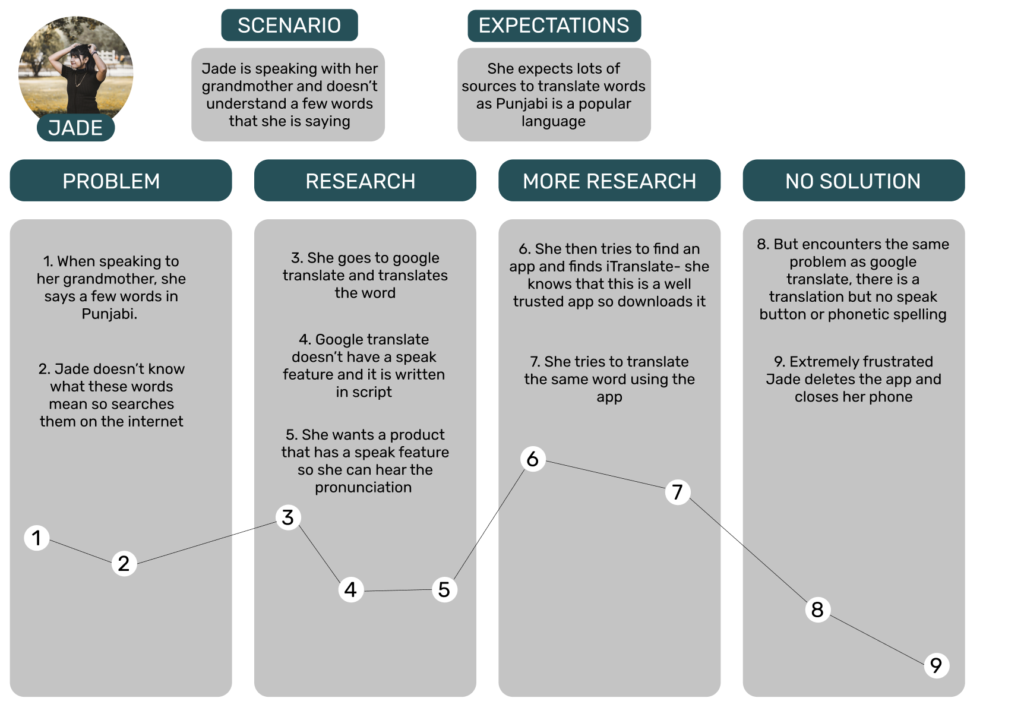
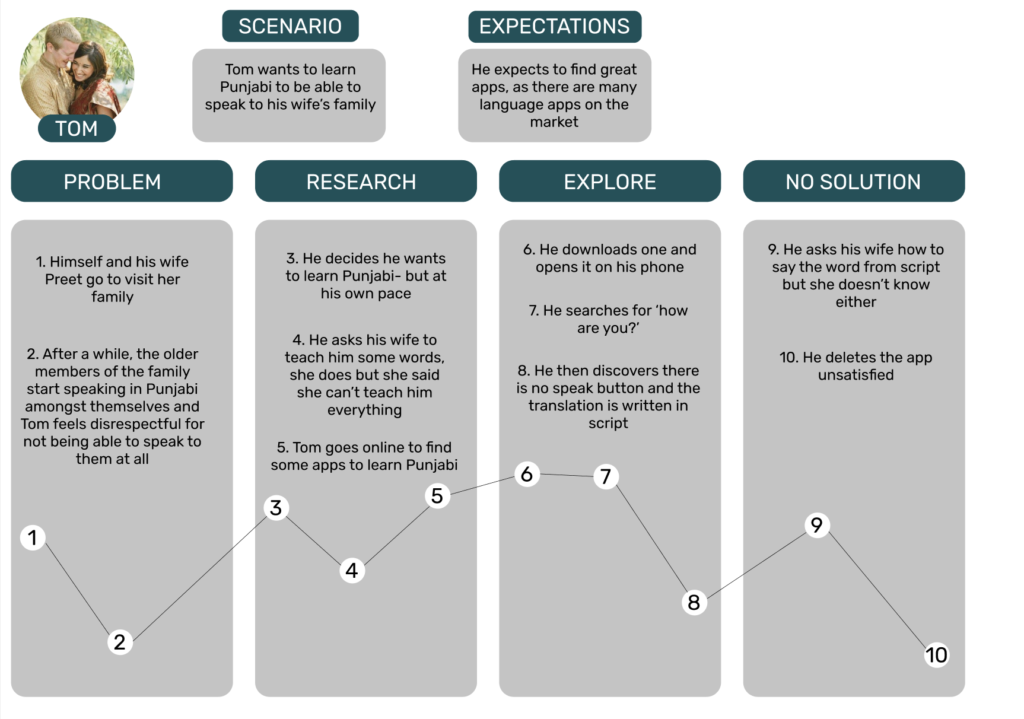
User Stories
From these journeys, we then created user stories to satisfy the user’s needs in the app.
- As a user, I want to type in a word or phrase, to have a Punjabi translation and phonetic appear
- As a user, I want the translation to have a speak feature to hear the pronunciation
- As a user, I want to see relevant words and phrases in the app
- As a user, I want the words and phrases translation to be very accurate
MVP and Feedback
From these user stories, we then were able to make an MVP. We included all the features mentioned in the user stories but started with just translating words for the first phase of the project. So we could get real user feedback on whether the app is usable and useful.
And then we could invest time and resources into translating phrases and understanding the complexity of that.
For now though, we wanted user feedback. So we designed a feedback form within the app to understand what the user’s thoughts on the app, if they would recommend it, and if they wanted to know any words in particular so we could add it to the app.
We are currently researching more users on how they use the app, if it is popular and which content they would find useful. Moving forward, we would be adding phrases to the app. And I will be researching on which content they would like in the app.
